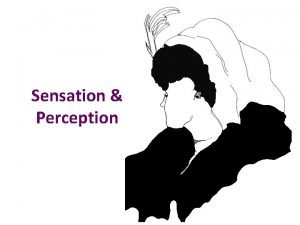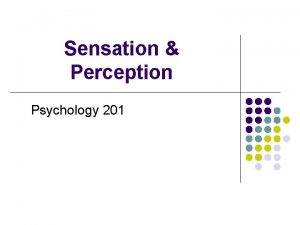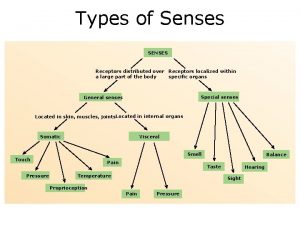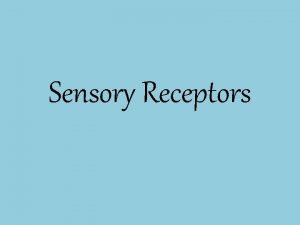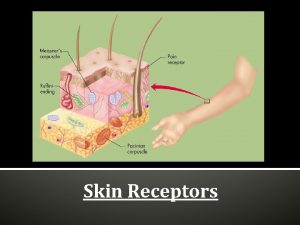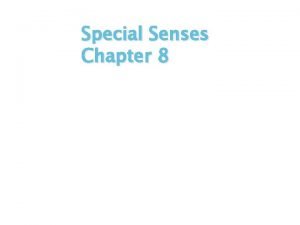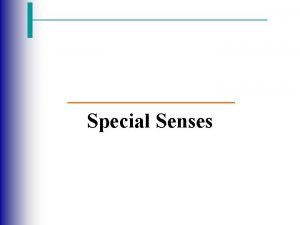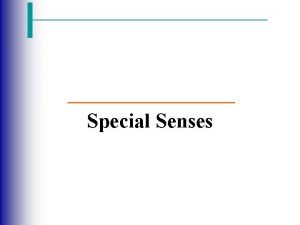Receptors How many senses to we have Why










- Slides: 10

Receptors How many senses to we have? Why have these senses evolved?

Receptors Humans can detect a range of stimuli: • Light • Chemical – smell and taste • Sound • Pressure • Pain Being able to detect and respond to stimuli • Stretch increases chance of • Balance and position survival • Heat

Role of receptors • Sensory reception is the function of receptors • Sensory perception involves making sense of the information from the receptors – the brain

Pacinian corpuscle • Receptors that detect mechanical pressure • It is specific to this stimulus • It produces a generator potential by acting as a transducer • The stimulus is always some form of energy, e. g. heat, light, sound or mechanical energy. The nerve impulse is a different form of energy - electrical • All receptors convert the energy of the stimulus into a nerve impulse known as a generator potential.

Pacinian Corpuscle Function • Found deep in the skin – fingers, soles of feet and external genitalia • Found in ligaments and tendons - so organism knows which joints are changing direction

Pacinian Corpuscle Structure • Single sensory neurone in the centre of layers of tissue • Layers separated by a gel

How does it work? • Sensory neurone ending has stretch-mediated sodium channels • Their permeability to sodium ions change when they are deformed by stretching

How does it work? • In normal resting state stretch-mediated sodium channels are too narrow to allow Na+ to enter – resting potential • Pressure is applied to the corpuscle and the membrane around the neurone becomes stretched • This widens the sodium channels and Na+ ions diffuse in • This changes the potential of the membrane (depolarised) – produces a generator potential • This creates an action potential that passes along the neurone


Challenge • In small groups make a 3 D model of the Pacinian corpuscle • Include labels of each structure • Try to show pressure affects it • Prizes for the best model as judged by the science department!


